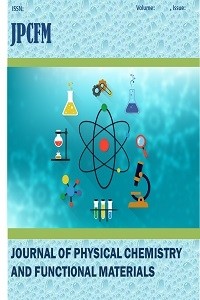Investigation of Spectral and Optical Properties of Color Polarization LensesInvestigation of Spectral and Optical Properties of Color Polarization LensesInvestigation of Spectral and Optical Properties of Color Polarization Lenses
Investigation of Spectral and Optical Properties of Color Polarization LensesInvestigation of Spectral and Optical Properties of Color Polarization LensesInvestigation of Spectral and Optical Properties of Color Polarization Lenses
___
- Harper, C., R.J. Emery, and D.M. Casserly, An assessment of occupational exposures to ultraviolet radiation from transilluminator light boxes in the course of biomedical research procedures. Journal of Chemical Health & Safety, 2008. 15(2): p. 16-22.
- P. V. Algvere, J. Marshall, and S. Seregard, "Age-related maculopathy and the impact of blue light hazard," Acta. Ophthalmol. Scand., vol. 84, pp. 4-15, 2006.
- Smith, G. and D.A. Atchison, Optics of the human eye. 2000: Butterworth-Heinemann.
- van Kuijk, F.J., Effects of ultraviolet light on the eye: role of protective glasses. Environmental health perspectives, 1991. 96: p. 177-184.
- Sivasakthivel, T. and K.S.K. Reddy, Ozone layer depletion and its effects: a review. International Journal of Environmental Science and Development, 2011. 2(1): p. 30.
- [6] Siekmann, H., Hazard to the eyes from optical radiation. Report of the BG Institute for Occupational Safety Abd Health, 2002.
- Abdulrahim, S., Y.M. Abubakar, and B.I. Tijjani, Evaluation of the level of transmission of solar radiation by eyeglasses (spectacles) and its effects on the human eye. Journal of Asian Scientific Research, 2015. 5(10): p. 489-498.
- Algvere, P.V., J. Marshall, and S. Seregard, Age‐related maculopathy and the impact of blue light hazard. Acta Ophthalmologica Scandinavica, 2006. 84(1): p. 4-15.
- [9] Roberts, J.E., Ocular phototoxicity. Journal of Photochemistry and Photobiology B: Biology, 2001. 64(2-3): p. 136-143.
- Peng, M.-L., et al., The influence of low-powered family LED lighting on eyes in mice experimental model. Life Sci J, 2012. 9(1): p. 477-482.
- Benito, A., et al., Objective optical assessment of tear-film quality dynamics in normal and mildly symptomatic dry eyes. Journal of Cataract & Refractive Surgery, 2011. 37(8): p. 1481-1487.
- Walsh, J.E., et al., Quantification of the ultraviolet radiation (UVR) field in the human eye in vivo using novel instrumentation and the potential benefits of UVR blocking hydrogel contact lens. British journal of ophthalmology, 2001. 85(9): p. 1080-1085.
- Dongre, A.M., G.G. Pai, and U.S. Khopkar, Ultraviolet protective properties of branded and unbranded sunglasses available in the Indian market in UV phototherapy chambers. Indian Journal of Dermatology, Venereology and Leprology, 2007. 73(1): p. 26.
- Sliney, D.H., Eye protective techniques for bright light. Ophthalmology, 1983. 90(8): p. 937-944.
- Pitts, D.G. and T.J. Tredici, The effects of ultraviolet on the eye. American Industrial Hygiene Association Journal, 1971. 32(4): p. 235-246.
- Büyükyıldız, H.Z., Gözlük camı kaplamaları ve renkli camlar. Türk Oftalmoloji Dergisi, 2012. 42(5): p. 359-369.
- http://www.zeiss.de/compendium, 05.10.2011.
- http://tr.transitions.com/tr/experience/Pages/Transitions-Xtractive.aspx, 09.01.2012.
- Segre, G., Reccia, R., Pignalosa, B., Pappalardo, G. (1981).” The efficiency of ordinary sunglasses as a protection from ultraviolet radiation”, Ophthalmic Research, 13(4), 180-187.
- Gonca, A. and S. Bilici, Investigation of Spectral and Optical Properties of Some Organic Eyeglass Lenses. İnönü Üniversitesi Sağlık Hizmetleri Meslek Yüksek Okulu Dergisi, 2023. 11(1): p. 1042-1053.
- Bilici, S., A. Bilici, And F. Külahci, Comparison Photon Exposure and Energy Absorption Buildup Factors of CR-39 and Trivex Optical Lenses. Turkish Journal of Science and Technology, 2022. 17(1): p. 23-35.
- Bilici, S., M. Kamislioglu, and E.E.A. Guclu, A Monte Carlo simulation study on the evaluation of radiation protection properties of spectacle lens materials. The European Physical Journal Plus, 2023. 138(1): p. 80.
- Cahiers d’optique oculaire No 9. Les traitements. http://www.varilux-university.org/SiteCollectionDocuments/WEBSHOP/Cahiers%20d%27Optiq ue%20Oculaire/COLLECTOR/Traitements.pdf, 04.01.2012.
- ISSN: 2651-3080
- Yayın Aralığı: Yılda 2 Sayı
- Başlangıç: 2018
- Yayıncı: Niyazi BULUT
Evaluation of Optical and Radiation Protection Parameters of High Refractive Index Polymers
A Review on Comparison between NiTi-Based and Cu-Based Shape Memory Alloys
Belan MOHAMMED IBRAHIM, Safar Saeed MOHAMMED, Esra BALCİ
Composition and Properties of Aspirin Through DFT Analysis
Rebaz OMER, Rzgar Farooq RASHİD, Rebaz OMER
A Review on Measurement of Radon Gas Concentration in Drinking Water
Adeeb JAFİR, Ahmed Hassan AHMED, Safar Saeed MOHAMMED
The development of Biomaterials in Medical Applications: A review
Safar Saeed MOHAMMED, Rezhaw Abdalla QADİR, Ahmad HASSAN, Asyar MOHAMMEDAMİN, Ashna Hassan AHMED
Spectroscopic and Photonic Properties of Dexamethasone used in the Treatment of COVID-19 Patients
A Insilico Study on Structural aspects of Caffeine by ArgusLab 4 software
